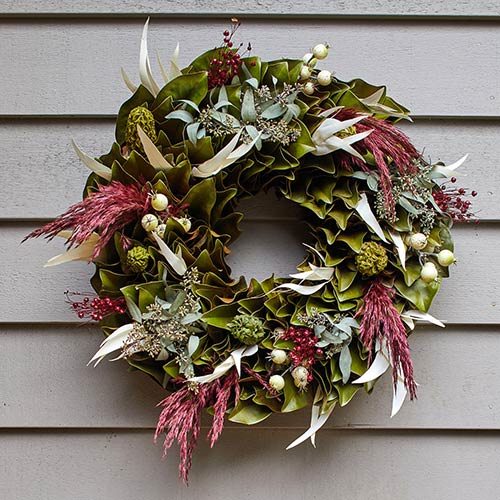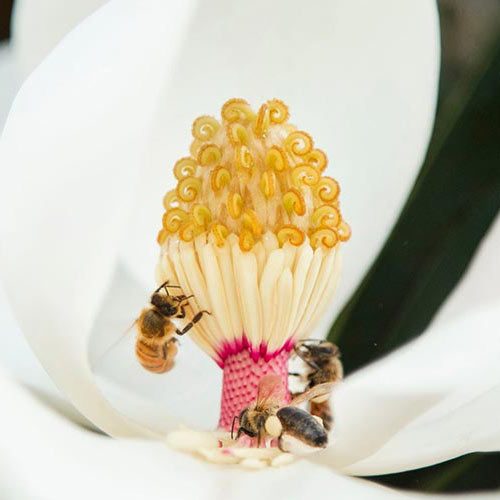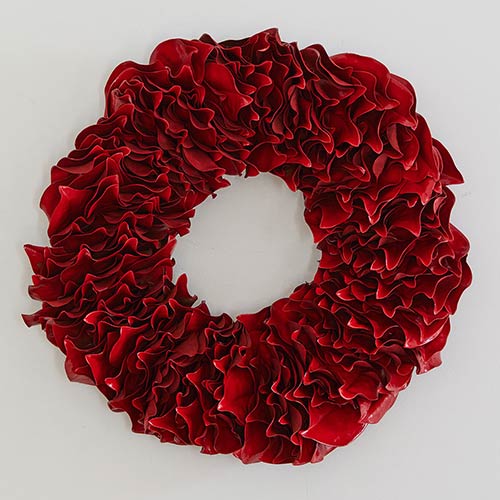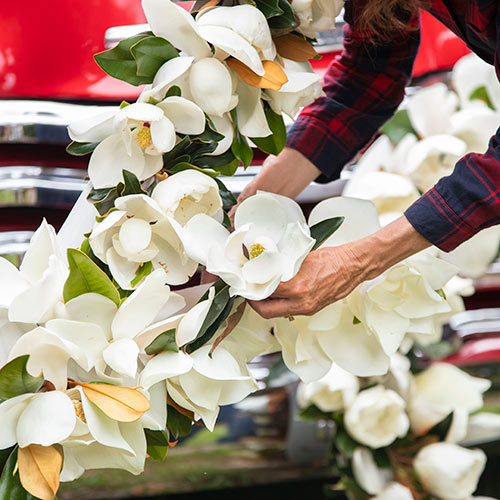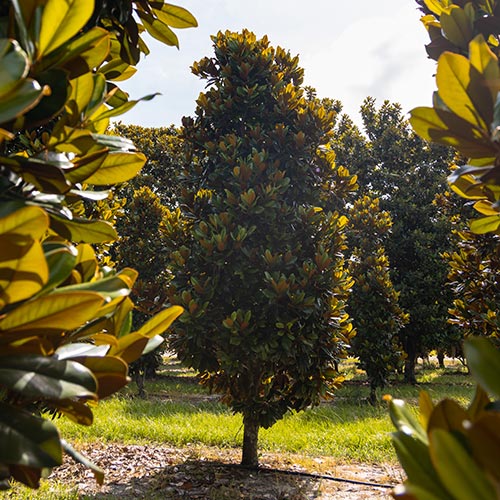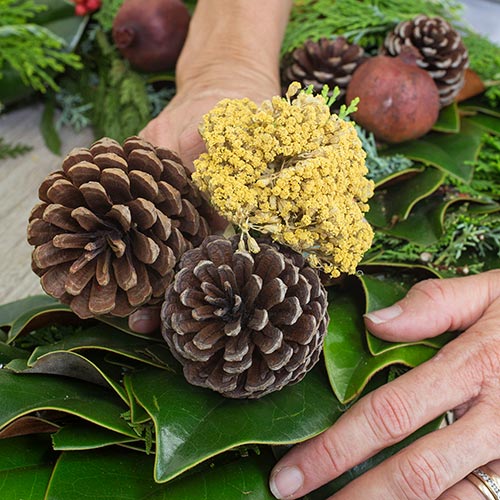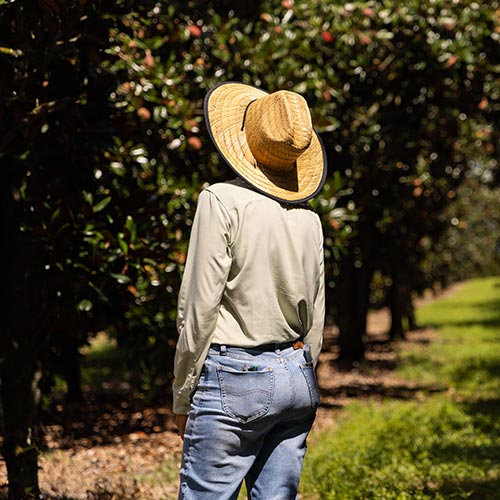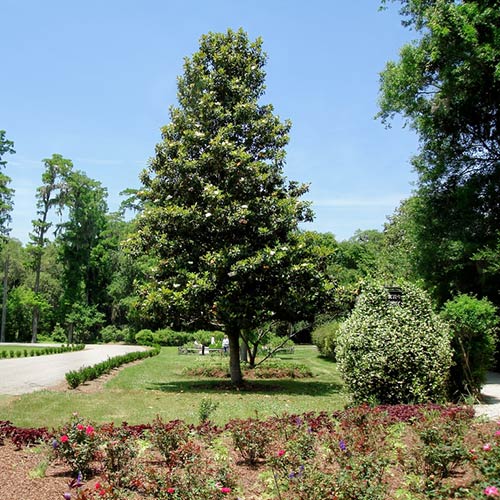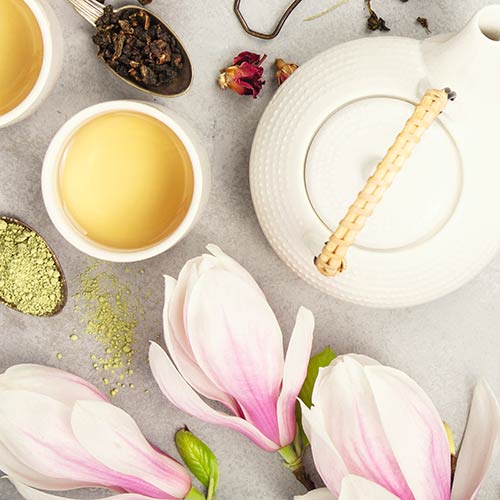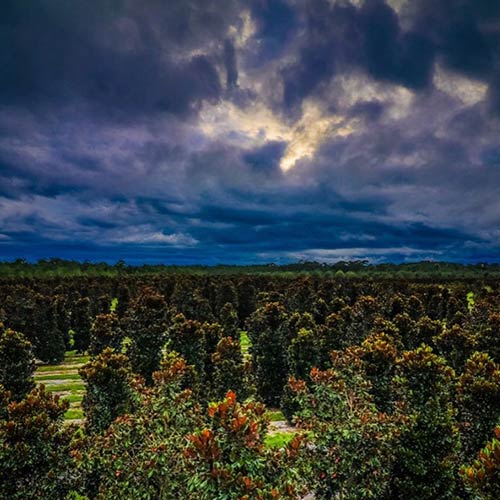Early Spring Magnolia Tree Care
April 25th, 2024
We love visiting the magnolia groves all through the year, but during the late spring it is fun to watch all of the young shoots and flowers emerge from the dormant trees. Watching the magnolias flower each spring is an annual rite which gives us hope and excitement for the upcoming spring and summer!
April showers bring May flowers, but March is where the magic happens.
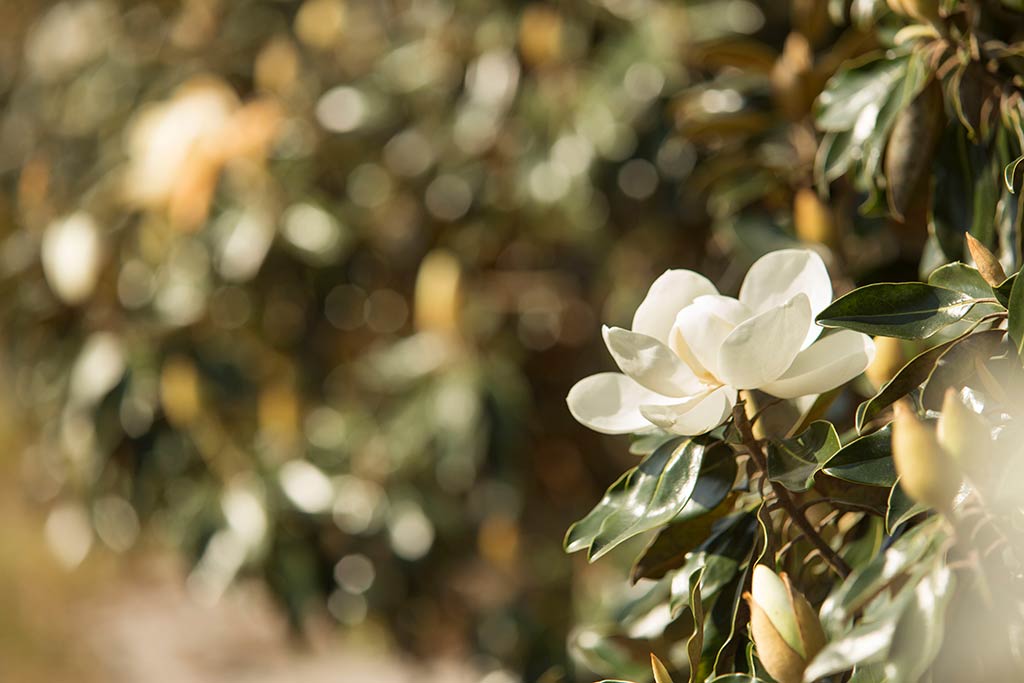
You did all the right steps for winter tree care. You carefully pruned your tree to make sure it’ll blossom this season. Good work!
As with all living things, magnolia trees need love and care to ensure their ability to flourish, especially when the warmer months roll around.
So, here’s our expert growing guide to springtime care for southern magnolias!
As with all of our guides, most trees have similar requirements, so don’t be afraid to apply the main ideas from our magnolia growing tips to your other leafy friends.
Springtime Pruning
By now, you’ve already gone through and pruned your tree – or at least, that’s the hope. If you haven’t, it’s not too late! However, you should really jump on pruning your magnolia sooner rather than later. The tree handles the stress of pruning when temperatures are cool and it’s in a state of dormancy, rather than active growth.
Check out our beginners guide to pruning like a pro for reference.
Scale, Thrips, and Mites – Oh My!
First things first – go check on your tree.
Take a minute to inspect the overall condition of your plant. Do you notice anything out of the ordinary? Are there any bugs that shouldn’t be there?
It’s not uncommon for magnolias to develop a pest problem. Mites, thrips, and scale are like catching a cold for these trees. It’s no big deal, but the tree does need a little help in dealing with them.
On our farm at The Magnolia Company, we use a horticultural oil most of the time for pest issues. In fact, most pests are easily controlled with horticulture oils.
We recommend treating your tree with neem oil. It’s a natural, non chemical solution that you apply topically to your plant, and it works for a variety of pests.
We like it because it’s both highly effective at what it does, and it’s not hard on the environment. Neem oil is available at most home improvement stores. Simply follow the instructions on the label for a stress free pest solution.
The key to successful pest treatment is total coverage and consistency. Spray treatments work by interrupting the lifecycle of the pest you’re targeting, but as with most small insects, they reproduce quickly.
To put it bluntly, there may be multiple generations of pests on your tree (remember, bug generations are usually a couple weeks apart, not decades of years).
Treat your tree every 14-21 days, ensuring total coverage of the infected area. Do this 3-4 times for bad infestations. Again, consistency is key because you need to break the lifecycle of the insects in order to completely rid the tree of its unwanted guests.
If you were lucky enough to catch the issue early and it seems only a small area is affected, the process is similar. A low maintenance solution for early onset pest control is to simply pick off the leaves and spray the area once or twice.
Remember to wait 14-21 days between your sprays, no matter the size of the infestation.
Food for Thought: Fertilizer
Because it’s the beginning of your plant’s growing season, it’s time to fertilize!
Fertilizer is like vitamin supplements for plants. It ensures the plant has the right nutrient base for its next phase of life and development.
We use a very general fertilizer as commercial tree growers. No matter what ratio you choose, we strongly suggest you use a controlled release fertilizer.
Controlled release fertilizers slowly release nutrients into the soil. These fertilizers can be a little more expensive up front, but they ultimately prove to be more cost effective for your wallet because you’ll use less fertilizer over time. Controlled release fertilizers don’t need to be applied nearly as often, and they’re better for the environment.
For home gardeners, we like to keep it simple – a general tree and shrub controlled/slow release fertilizer from a home improvement store will be just fine.
If you like the plant nerd specifics, here’s the juicy details:
For roses and other small flowering plants, like dogwoods, redbuds, and camellias, use an 18-6-8 ratio. These fertilizers are humidity and temperature activated, so if you’re in a warmer climate (like Florida), opt for a 6 month release. Cooler climates can get away with a 3 month release.
For large trees and deciduous magnolias, like Southern magnolias, oaks, and magnolia Ann’s, use a 16-4-12 ratio (also controlled release over 3-6 months).
As with any product, defer to the instructions on the packaging to know how much to use. It’ll likely require you to know the caliper of the tree, which is the diameter of the tree trunk or stem. A good rule of thumb is about ¾-1 pound of fertilizer per inch of caliper.
So, a 5” caliper tree gets about 5 lbs of fertilizer.
When you fertilize, remember to consider the size of the root ball, which usually extends out from the canopy. If the tree is established, you’ll need to spread your fertilizer outward from the trunk. If it’s a young tree, keep it close to the root ball.
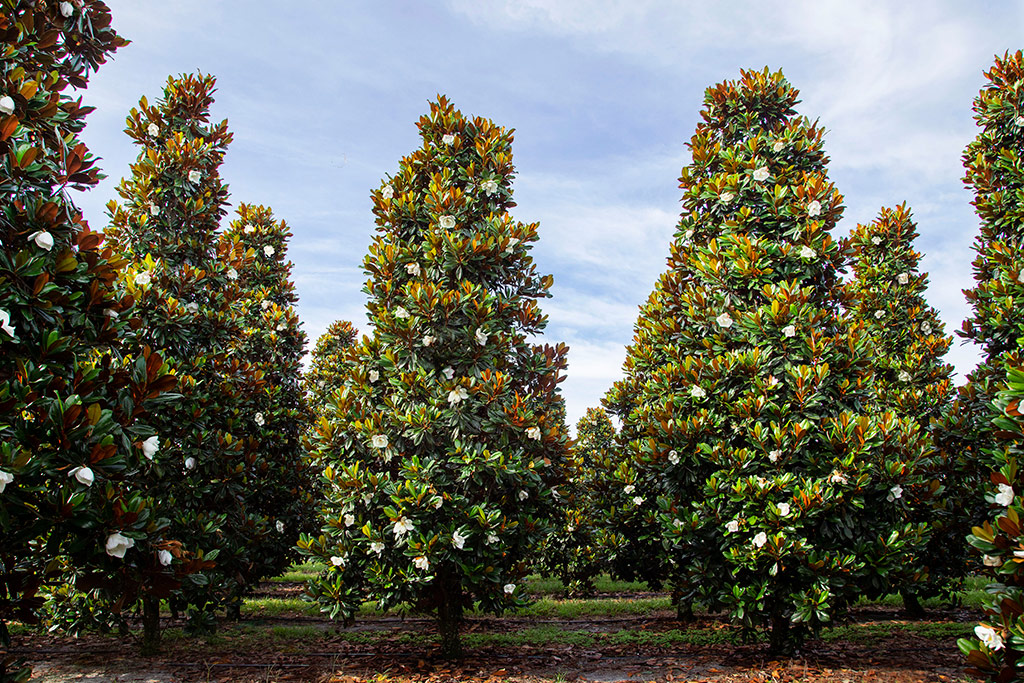
Hydration, Hydration, Hydration
As we’re sure you gathered, you’ll need to up your watering frequency in the spring. The exact frequency varies per area, but here’s our guidelines.
For our friends who have sandy soil and live in areas that see full sun, like our fellow Floridians, water your plants about 2 times a week.
Clay soil that holds moisture can get away with once a week.
Of course, your plants will tell you how they’re doing with their water needs. Water stress in plants shows quickly, so keep an eye out for splotches on the leaves, burned spots, or wilted tips. Don’t be afraid to experiment a little!
Bring on the Mulch
Our last pro tip for a healthy springtime tree is all about mulch.
As expert growers, we definitely recommend mulching your plants. It accomplishes two major things – weed control and water retention.
All plants want to keep growing, especially as daylight lengthens and temperatures increase. We like to think of plants as the pretty leafy things we intentionally put into the ground, but we often forget weeds are plants, too. Just like your favorite tree or shrub, your weeds grow faster in the spring. Mulch prevents weed seeds from being able to take root in the soil.
Mulch also controls the hydration levels of your soil. It traps water, so you won’t need to water mulched plants nearly as often as unmulched plants. As an added bonus, the mulch returns nutrients to the soil as it breaks down over time.
Everybody wins! (…Except the weeds, of course.)
There are lots of kinds of mulch, from wood based to artificial. We prefer pine bark mulch for our magnolia trees.
Applying mulch is easy. Pull out any weeds and make sure you remove their roots, then lay down 1.5”-2” of mulch on top of the root ball of your tree.
Our local expert at The Magnolia Company & Seeds of Life, Matt Roth, likes to keep the mulch a couple inches away from the magnolia tree trunks so the moisture doesn’t creep up on the tree trunk and rot the wood.
Got plant questions or magnolia tree woes? Please, reach out!
Call our customer service line, send us an email, or even reach us with a direct message on any of our social medias. We can’t wait to hear how your garden is growing!
Recent Articles
